The cuisines of Indian land are known for their deliciousness. Many health-beneficial greens are cultivated on this land, which is also very tasty. Drumsticks are also among them. Drumstick, or Moringa, is a fast-growing, tall, slender tree primarily grown for its leaves, seedpods, and pericarp. Pods are used in various delectable cuisines, and leaves are used as vegetables. Besides its taste, moringa is high in iron, calcium, and vitamins A and C.
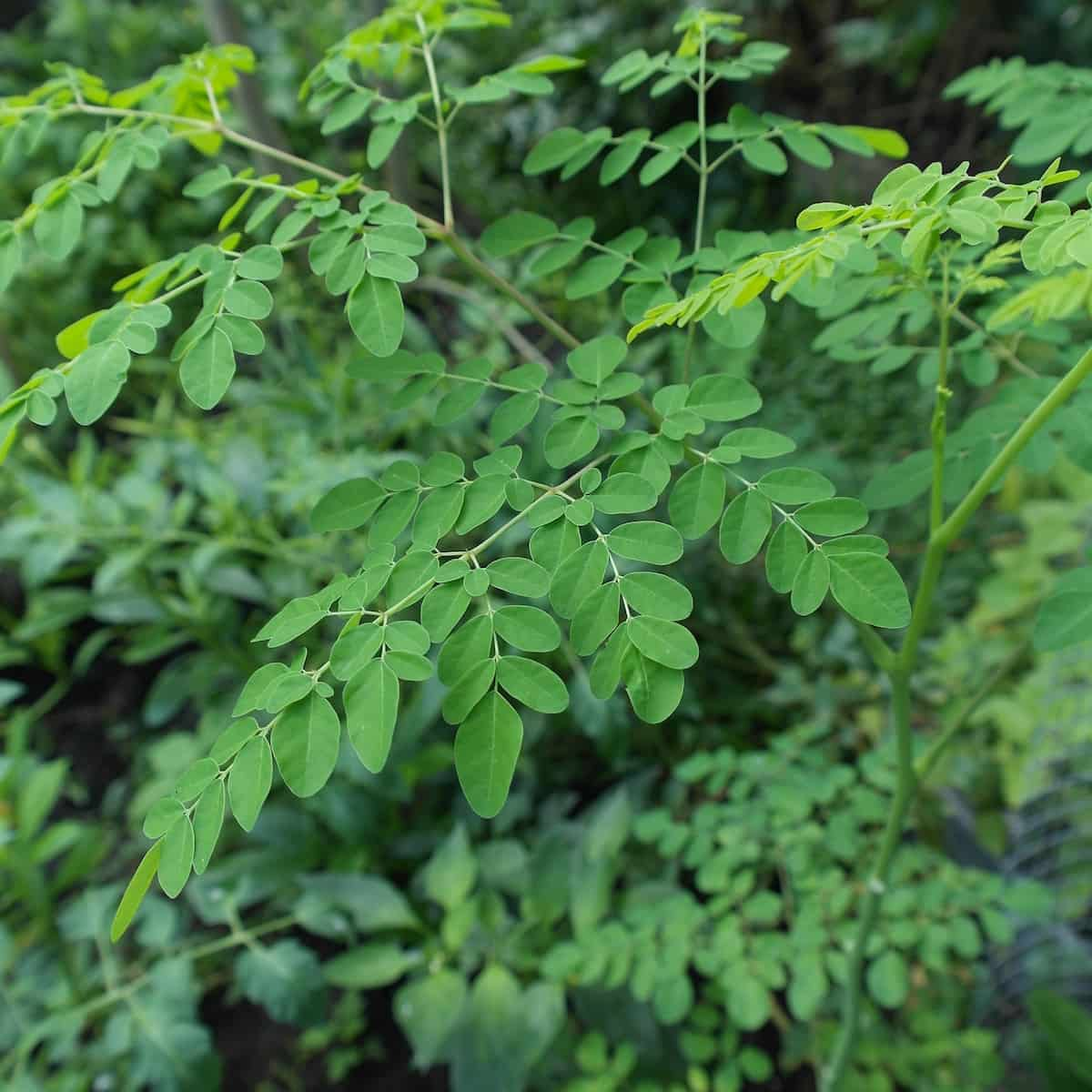
Native to the Indian subcontinent, it is grown throughout the tropics for multiple purposes, including human food, livestock feed, and medicine. Hardy, drought tolerant, tolerant of a wide range of temperatures, grows in different types of soil, and grows fast and vigorously. Protein and essential amino acids are abundant in the leaves. This tree also contains various essential minerals, healing properties, and health benefits. This tree’s leaves are used for human consumption and animal feed. Moringa pests and diseases include the following.
Pest and disease management in moringa
Major insects for Moringa tree
Moringa hairy caterpillar
The adult is a large moth with light yellowish brown wings and faint lines, and The female moth lays eggs in yellow, flat, circular egg clusters on the lower surface of leaves. The egg period is 5-7 days. The larvae hatch after 4-10 days. They feed for about 13 to 29 days on the tree leaves until they form a cocoon. After 9-25 days in a silk cocoon, the adult moth hatches. During the winter, the larvae may perform dormancy. Caterpillar is dirty brown with whitish hairs arising in tufts on small warts. Hairs are poisonous and irritating.
Damage symptoms
- The larva is seen in groups in tree trunks and feeds gregariously.
- Scraping the bark and gnawing foliage
- Severe infestation leads to defoliation of the tree
- In hot weather, caterpillars gather in clusters on the stems of plants
- They are active at night, defoliate trees quickly, and collect on trunks
- During the larval stage, leaves are defoliated as a result of feeding
Biological control
- Sprays of neem and Datura extracts reduce caterpillar populations.
- The bacterium Bacillus thuringiensis is a microbial pesticide killing caterpillars by crippling the gut.
Chemical control and management
- Egg masses and caterpillars should be collected and destroyed
- Light traps should be used immediately after rain to attract and kill adults
- Congregating larvae on trunks should be killed with the burning torch
- After the rain, spray chlorpyriphos 20 EC, quinalphos 25 EC, or endosulfan 35 EC 1.0 L in 200 – 300 L of water per acre or fish oil rosin soap 25 g/L on the trunks and foliage.
- Spray 1.0 kg of carbaryl, 50 EC of malathion, or 1.0 L of endosulfan per acre in 200 -300 liters of water.
- Use a burning torch to kill congregating larvae on the trunk
- Spray Carbaryl 50 WP at 2 grams per liter.
In case you missed it: Drumstick Farming Project Report (Moringa), Cost and Profit
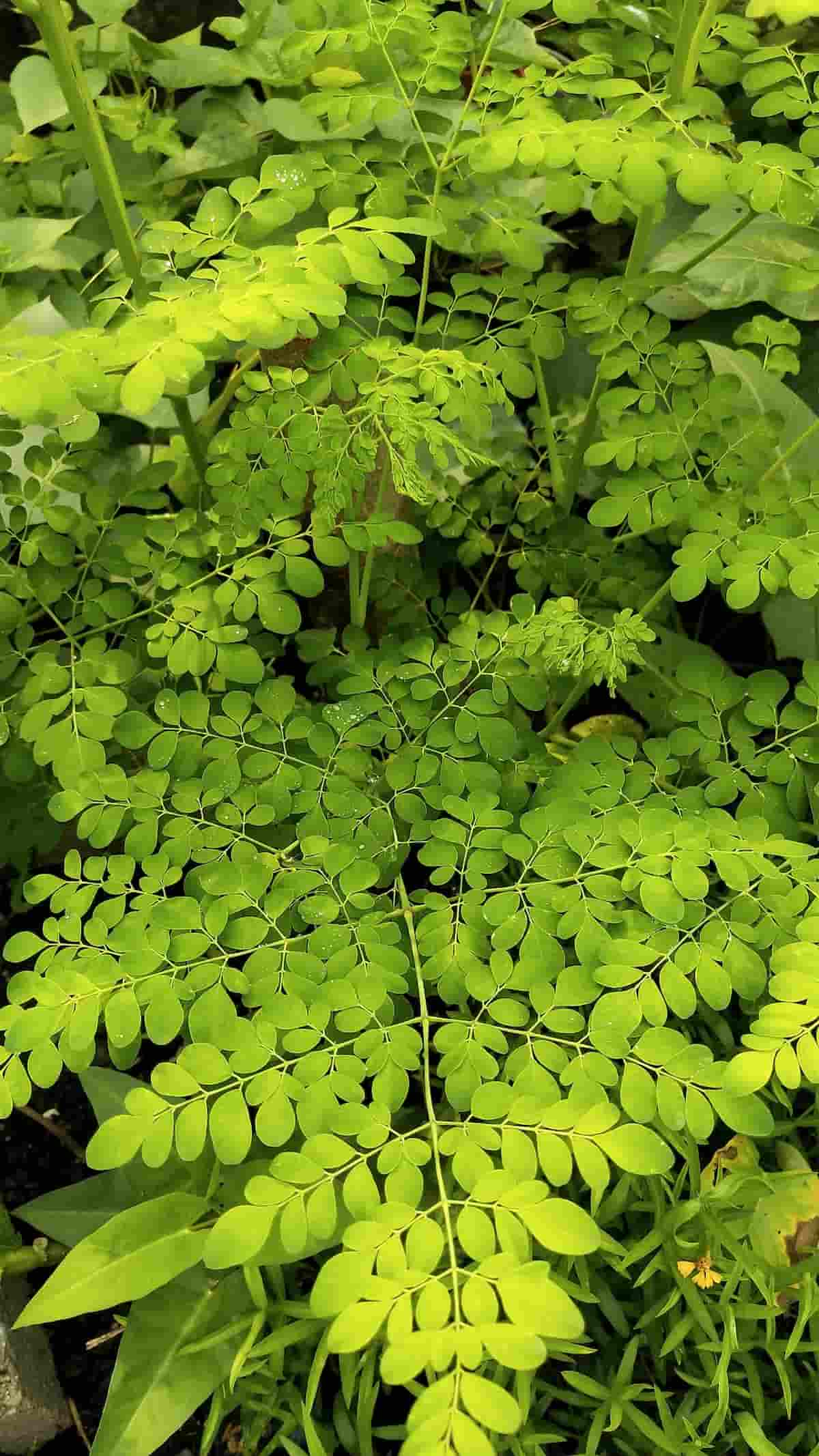
Moringa budworm
Creamy oval eggs are laid singly or in groups on flower buds.The larva is dirty brown with a prominent mid-dorsal stripe, black head, and prothoracic shield.Pupation takes place in an earthen cocoon in the soil.Adult’s Fore and hind wings are light yellowish brown
Damage symptoms
- In the early stages, the caterpillars are gregarious and scrape the leaf lamina’s chlorophyll content, giving it a papery white appearance.
- Later they become voracious feeders making irregular holes in the leaves.
- Irregular holes on leaves initially and later skeletonization leaving only veins and petioles
- Heavy defoliation and bored fruits with irregular holes
- Larvae bore into flower buds feeding on the inner contents, causing shedding up to 78 percent during summer.
Biological control
- Light traps should be set up at 1/acre
- Promoting natural enemies such as wasps (Polistes spp. ), big-eyed bugs, damsel bugs, minute pirate bugs (Orius spp. ), and spiders is essential.
- Trichogramma pretiosum and Cardiochiles nigriceps are parasitoids found in vegetables; Cotesia marginiventris are found in other crops.
- The parasitoids Archytas marmoratus, Meteorus autographed, Netelia sayi, Pristomerus supinator, and several insects of the genus Campoletis may also be used.
- Using products based on pathogens such as Bacillus thuringiensis, Nosema species, Spicaria rileyi, or nuclear polyhedrosis virus can also effectively suppress these budworms.
Chemical control and management
- Plow around trees to expose pupae and kill them
- Damaged buds and caterpillars should be collected and destroyed
- 1-2 light traps per acre should be used to attract and kill adults
- In 200 – 300 liters of water per acre, spray carbaryl 50 WP 1.0 kg or malathion or endosulfan 1.0 L.
Pod fly
Its activity is maximum from April to October and declines after that. The adult is a small yellowish fly with red eyes. Wings extend beyond the body and have a dark spot near the coastal margin. Cigar-shaped, sculptured, and white-colored eggs The cigar-shaped pods are laid in groups of 3-4 on the grooves of tender pods. The egg period lasts 3-4 days, and the larva lasts 18-25 days. A cream-colored maggot pupates for five to nine days in the soil after it has reached full maturity.
Damage symptoms
- Infestation of this pest starts from fruit initiation and persists till the harvesting stage. Maggots enter into tender fruits by boring small-bore holes at the terminal end.
- Due to this injury, a gummy exudation drips down from the pods resulting in shrinking, rotting, drying, and splitting of the fruits.
- A maximum of 20-28 larvae are found in fruit. As a result, the internal contents of the fruits rot.
- Drying and splitting of fruits from the tip and oozing of gummy exudate from fruit
Chemical control and management
- The fallen and damaged fruits should be collected and destroyed
- Citronella oil, eucalyptus oil, vinegar (acetic acid), dextrose, or lactic acid are good attractants
- Spray insecticides such as Nimbecidine 3ml/lit at 50% fruit set and 35 days later
- Apply endosulfan 4% at 25kg/ha or drench NSKE 5% at 2L/tree at 50% fruit set to destroy the puparium.
- Rake up the soil under the trees frequently or plow the infested field to destroy the puparium.
- When pods are 20-30 days old, spray dichlorvos 76 SC 500 ml or malathion 50 EC 750 ml in 200 – 300 L of water per ha, then apply Azadirachtin 0.03 % 1.0 L when 50% of the fruit has been set.
In case you missed it: Moringa Seed Germination Procedure, Spacing, Yield
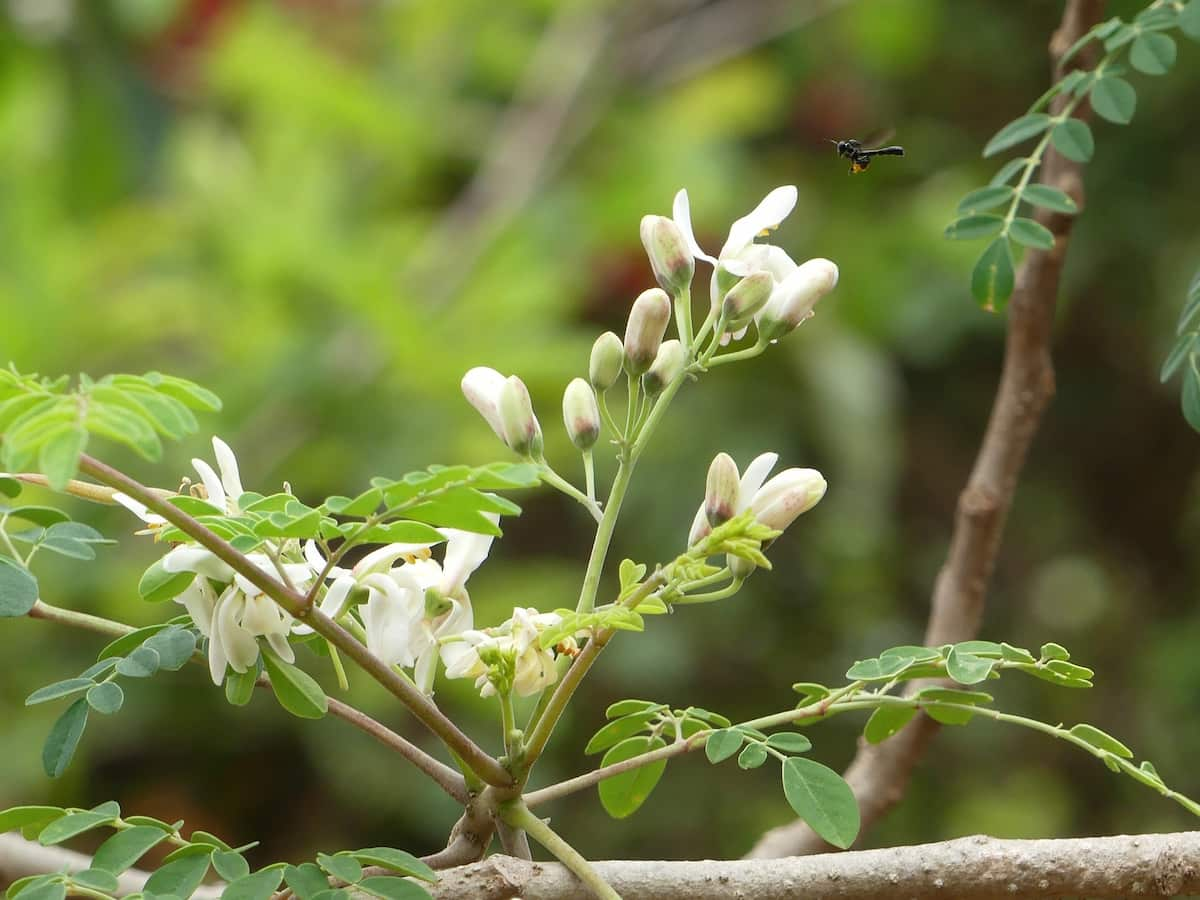
Leaf caterpillar
The caterpillar belongs to the order Lepidoptera and is in the immature stage of a moth or butterfly. Insects undergo a complete metamorphosis involving the stages of egg, larva, pupa, and adult.
- Egg: Creamy white oval eggs are laid in clusters on leaves.
- Larva: They are devoid of the prothoracic shield.
- Adult: It is similar to a budworm but much larger. There are four to six molts during the larval stage, which separates each developmental stage. The caterpillar feeds on plants by chewing them. Leaf-eating insects are the most common. Some trees and shrubs, however, support species that tunnel into leaves or needles, bore into cones or fruit, or tunnel into branches and trunks. Even though several caterpillars feed on trees and shrubs, most occur chronically in low numbers and rarely cause damage
Damage symptoms
- Caterpillars feed on leaf lamina, turning them into transparent parchment-like structures. The peak infestation period is from March to April and December to January.
- Caterpillars feed on the leaves and cause defoliation.
- Larva feeds on the leaflets reducing them into papery structures
Biological control
- Set up a light trap at 1/acre to attract and kill adults
- Some beneficial insects and organisms prevent caterpillar numbers from rising to damaging levels.
- There are several species of parasitic wasps or flies that attack most caterpillar species. Check for parasite cocoons next to caterpillars, darkened caterpillar eggs, or exit holes in dead caterpillars.
- In addition to birds, assassin bugs, lacewings, and predaceous ground beetles, there are several general predators.
- Caterpillars are often killed by naturally occurring diseases caused by viruses, bacteria, or fungi.
Chemical control and management
- Plow around trees to expose and kill pupae
- Collect and destroy damaged buds along with the caterpillar
- Spray insecticides like carbaryl 50 WP at 1gm/lit or malathion 50 EC 2 ml/lit of water
- Spray malathion 50 EC at 1 ml/ lit
In case you missed it: Moringa Pests, Diseases, and Control Methods (Drumstick)
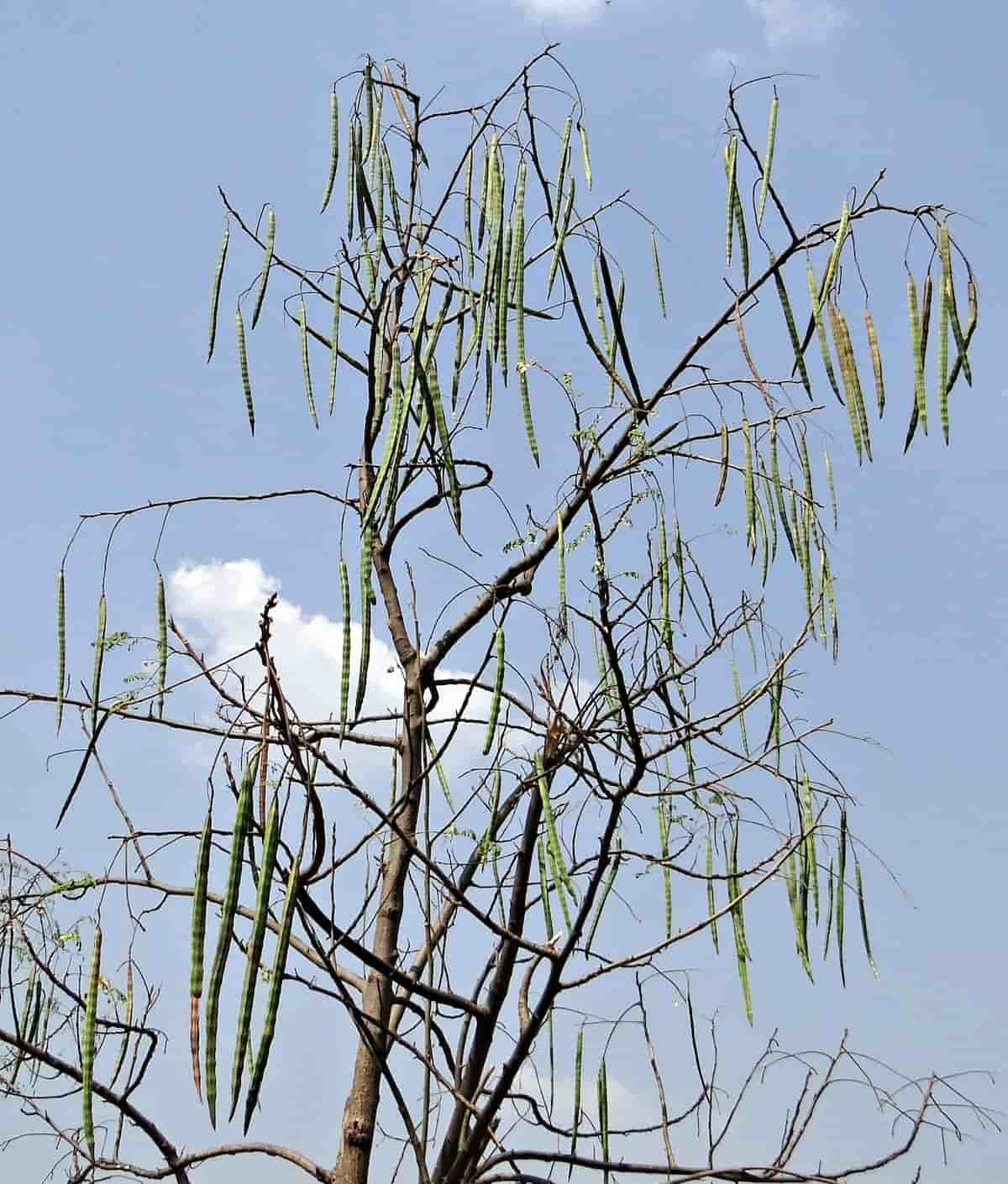
Bark caterpillar
The moths lay eggs in clusters in the bark crevices. The eggs are light brown. After 7 – 11 days, the eggs hatch to form a small neonate. Larvae are After the eggs hatch, and the larvae move out in search of food. They look out for concealed shoots and bore a tunnel into the wood. The tunnel acts as a shelter from sunlight. While after sunset, the larvae come out to feed on the outer bark. This lasts for about 27-298 days.
After that, the pupa is the rest phase for larvae to grow into adults. The rest phase is conducted in the tunnels made during its larval stage. It takes 20-25 days for the pupa to become an adult. The adult is a stout yellowish-brown moth with wavy brown markings on the forewings. Also, Males are smaller than females and have shorter lifespans. This phase can vary from 4-7 days.
Damage symptoms
- Visible irregular tunnels coated with thick, ribbon-like, silken webs filled with excreta and chewed wood particles on the shoots, branches, stem, and trunk.
- Zig-zag galleries and silken webbed masses comprising of chewed material and excreta of larva
- Damage on young shoots and feeble-looking plants. Shoots and branches show shelter holes.
- Young trees may die due to the attack.
- Caterpillars are noticed on the trunk and tree branches.
Biological control
- Plow around moringa trees to expose and kill pupae.
- Collect and then destroy damaged buds along with the caterpillar.
- Set up a light trap by 1/acre.
Chemical control and management
- Clean all webbed material, plug the holes with cotton wool soaked in fumigants like chloroform, formalin, or petrol and seal it with mud
- Clean the affected portion with a swab of cotton soaked in petrol or Kerosene.
- During September-October, inject 5 ml dichlorvos in the borehole using a syringe and plug the hole with mud. Next, place Carbofuran 3G granules at 5 gm per borehole and seal them with mud.
- Pad with monocrotophos at 10ml / tree or swab the trunk with carbaryl 50 WP at 20 gm/lit.
- Swab Coal tar + Kerosene at 1:2 or Carbaryl 50 WP 20 g / lit of water on the basal portion of the trunk up to 3 feet height
- Padding with monocrotophos 36 WSC 10 ml in 2.5 cm /tree soaked in absorbent cotton.
- Apply the copper oxychloride paste on the tree’s trunk if severe infestations occur.
- After applying monocrotophos 36 WSC 10 to 20 ml/ hole
- Apply carbofuran 3G 5 g per hole and plug with mud.
Diseases of Moringa
Damping off
The disease or condition damping off occurs in horticultural plants. During germination, this condition damages or weakens the seedlings. It is primarily found in humid and cool conditions and is caused by different pathogens. Rhizoctonia solani and Aphanomyces cochlioides are two fungi that cause damping-off. Pythium, Fusarium, Phytophthora, Botrytis, Cylindrocladium, Diplodia, Phoma, and Alternaria are also responsible for this disease.
In case you missed it: Organic Moringa Farming (Drumstick) – Production In India
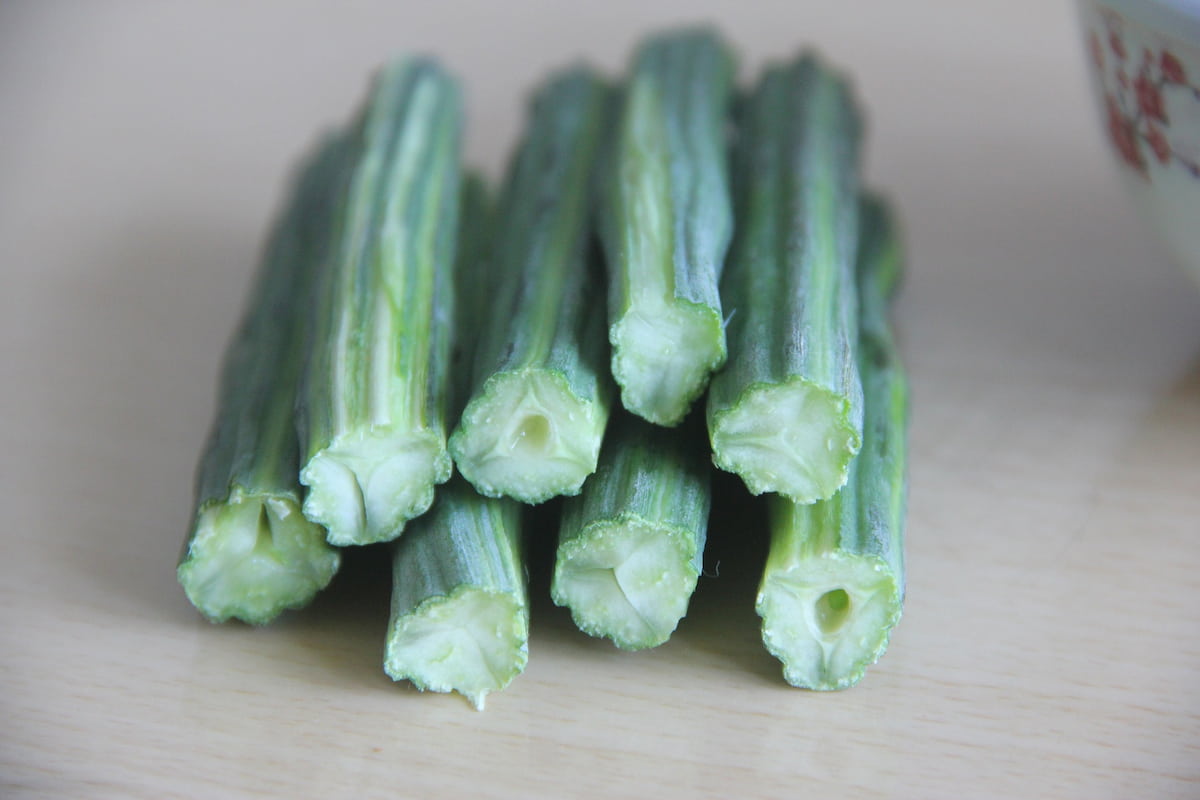
Damage symptoms
- The disease of nursery beds and young seedlings results in reduced seed germination and poor stand of seedlings. Very high seedling mortality of 25-75%.
- Pre-emergence damping off Seedlings disintegrate before they come out of the soil surface, leading to poor seed germination
- The development of disease characterizes post-emergence damping off after seedlings have emerged out of the soil but before the stems are lignified
- Water-soaked lesion formation at the collar region
- Infected areas turn brown and rot
- Plants wilt and collapse as a result of softening of tissues
- In Rhizoctonia solani attack, infected stems become hard and thin (wire stem symptoms), and infected seedlings topple. The disease appears in patches both in nursery and field beds.
Chemical control and management
- Treat the seeds with Trichoderma asperellum at 4 g/kg or Pseudomonas fluorescens at 10 g/kg of seeds 24 hours before sowing
- Apply P. fluorescens to the soil at 2.5 kg/ha with 50 kg of FYM. Avoid stagnation of water. Drench with copper oxychloride at 2.5 g/l at 4 l per sq.m.
- Used raised seed bed
- Provide light but frequent irrigation for better drainage.
- Drench with Copper oxychloride 0.2% or Bordeaux mixture 1%.
- Seed treatment with fungal culture Trichoderma viride (4 g/kg of seed) or Thiram (3 g/kg of seed) is the only preventive measure to control the pre-emergence damping off.
- Spray 0.2% Metalaxyl when there is cloudy weather
Anthracnose
Various diseases affect plants in similar ways under the term anthracnose. However, the damage anthracnose can do to trees is one of its most notable characteristics. Many plants are affected by this fungal disease, including vegetables, fruits, and trees. Additionally, it attacks growing shoots and expanding leaves. During rainy seasons, it can spread very quickly. It is very easy for anthracnose to spread from infected plant debris. The fungus thrives in humid and warm conditions and often spreads by water.
Damage symptoms
- In the early stages of anthracnose, yellow or brown spots appear on the leaves. As the spots age, they darken and expand, covering the leaves.
- The leaves, stems, flowers, and fruits are covered with dark, sunken lesions.
- A small, dark, sunken spot may appear on fruits, which may spread. A pinkish spore mass forms in the center of these spots when the weather is moist. The fruits will eventually rot.
- Young leaves develop brown spots and patches. Defoliation of trees can also result from it
Chemical control
- Use disease-free seeds during sowing and for transplanting.
- Seed treatment with Thiram at 800 grams per acre or zineb at 1 kg per acre.
- Three sprayings with captan 0.2 %- 1st spraying – just before flowering, 2nd at the time of fruit formation and 3rd – fortnight interval after second spraying
In case you missed it: Best Fertilizer for Moringa Plant: Organic, Compost Manure, NPK, and Schedule
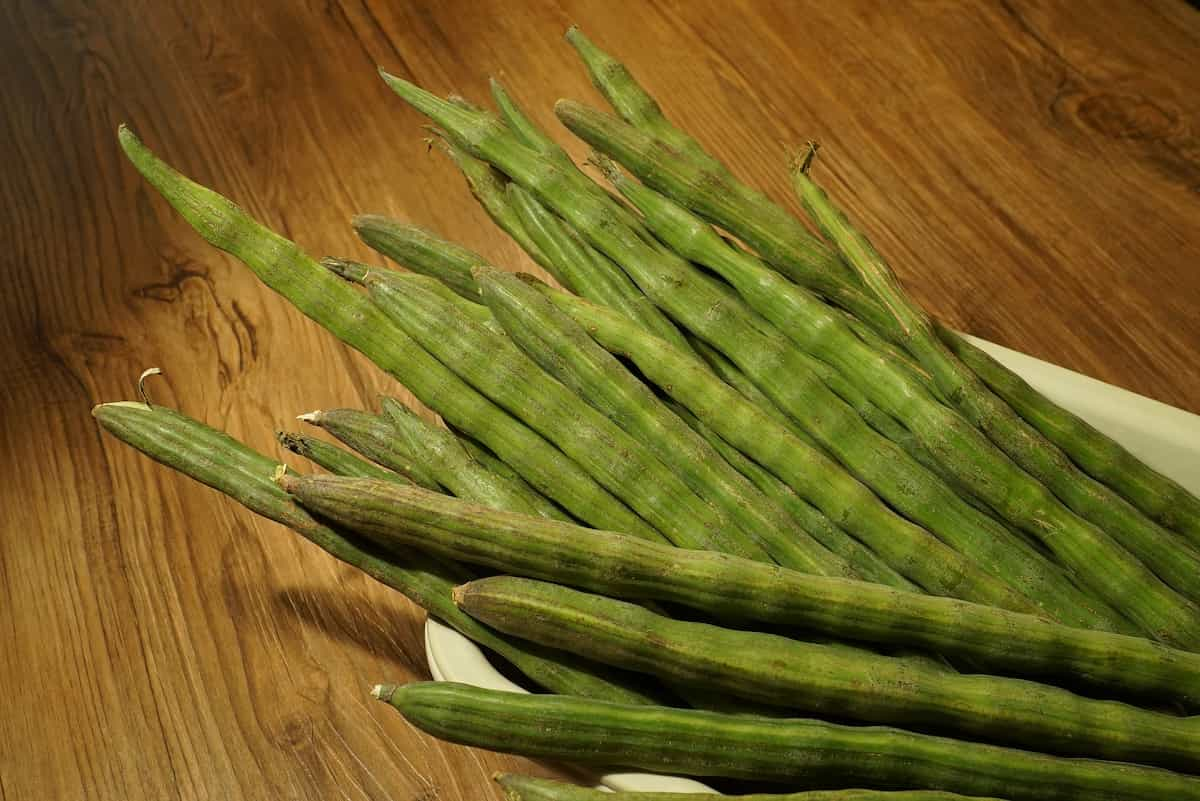
Twig canker
Canker, a plant disease caused by numerous fungi and bacteria, occurs primarily on woody species. Symptoms include round-to-irregular sunken, swollen, flattened, cracked, discolored, or dead areas on the stems (canes), twigs, limbs, or trunk. In addition, cankers may enlarge and girdle a twig or branch, killing the foliage beyond it. They are most common in plants weakened by cold or drought stresses, insect injury, nutritional imbalances, nematodes, or root rot.
Disease symptoms
- The first symptom of the disease is clearing the veinlets and chlorosis of the leaves.
- The younger leaves may die in succession, and the entire may wilt and die in a few days.
- Soon the petiole and the leaves droop and wilt.
- In young plants, symptom consists of the clearing of veinlet and the dropping of petioles.
- The symptoms continue in subsequent leaves.
- At a later stage, browning of the vascular system occurs.
- Plants become stunted and die.
Chemical control and management
- Fungicidal sprays containing the active ingredient of Thiophanate-methyl have been proven very effective in controlling the constriction canker.
Powdery mildew
One of the most common and easily recognized plant diseases is powdery mildew. Plants of all kinds are affected, including cereals and grasses, vegetables, ornamentals, weeds, shrubs, and fruit trees. White to grayish patches of talcum-powder-like growth are characteristic of powdery mildews. Warm, dry climates are conducive to powdery mildew. Tolerance or resistance to powdery mildew has been developed in many plants. During late summer, avoid using nitrogen fertilizer once the disease has become a problem.
Damage symptoms
- Despite their various types, powdery mildew fungi produce similar symptoms on plant parts. White to grayish patches of talcum-powder-like growth characterize powdery mildews.
- Furthermore, small, pinhead-sized, spherical fruiting structures with alternating white, yellow-brown, and black fruiting surfaces may occur singly or in groups. A fungus’ overwintering bodies are called cleistothecia.
- There is a high disease prevalence on the upper sides of the leaves. However, it also affects leaves, young stems, buds, flowers, and young fruit on the bottom sides.
- Infected leaves may appear distorted, turn yellow with patches of green, and fall prematurely. In addition, the buds may not open if they are infected.
Chemical control and management
- Apply sulfur or copper-based fungicides to prevent infection of susceptible plants. For best results, apply early or at the first sign of disease. Spray all plant parts thoroughly and repeat at 7-10 day intervals up to the day of harvest.
- Spray wettable sulfur at three g per l or carbendazim at 1 g per l in three sprays at 15 days intervals from the first appearance of symptoms.
- Spray Wettable sulfur 0.25% or Dinocap (Karathane) 0.05%
- Wash foliage occasionally to disrupt the daily spore-releasing cycle. Neem oil and PM Wash, used on a 7-day schedule, will prevent a fungal attack on plants.
Conclusion
Moringa plants are less likely to suffer from diseases, but they can be more dangerous. Bacteria, fungi, viruses, and other sources are responsible for most diseases. In the early stages, the disease reduces photosynthetic area while in the later stages, if left untreated, it affects reproductive parts and yields. Along with diseases, pests also significantly reduce yields.
- Types of Pesticides Used in Agriculture: A Beginner’s Guide
- Economical Aquaculture: A Guide to Low-Budget Fish Farming
- 15 Common Planting Errors That Can Doom Your Fruit Trees
- How to Make Houseplants Bushy: Effective Tips and Ideas
- Innovative Strategies for Boosting Coconut Pollination and Yield
- Pollination Strategies for Maximum Pumpkin Yield
- The Complete Guide to Chicken Fattening: Strategies for Maximum Growth
- Natural Solutions for Tulip Problems: 100% Effective Remedies for Leaf and Bulb-Related Issues
- Revolutionizing Citrus Preservation: Towards a Healthier, Greener Future
- Natural Solutions for Peony Leaf and Flower Problems: 100% Effective Remedies
- Maximizing Profits with Avocado Contract Farming in India: A Comprehensive Guide
- Natural Solutions for Hydrangea Problems: 100% Effective Remedies for Leaf and Flowers
- The Ultimate Guide to Choosing the Perfect Foliage Friend: Bringing Life Indoors
- From Sunlight to Sustainability: 15 Ways to Use Solar Technology in Agriculture
- The Ultimate Guide to Dong Tao Chicken: Exploring from History to Raising
- The Eco-Friendly Makeover: How to Convert Your Unused Swimming Pool into a Fish Pond
- Mastering the Art of Delaware Chicken Farming: Essentials for Healthy Backyard Flocks
- 20 Best Homemade Fertilizers for Money Plant: DIY Recipes and Application Methods
- How to Craft a Comprehensive Free-Range Chicken Farming Business Plan
- Brighten Your Flock: Raising Easter Egger Chickens for Beauty and Bounty
- How to Optimize Your Poultry Egg Farm Business Plan with These Strategies
- Subsidy for Spirulina Cultivation: How Indian Government Schemes Encouraging Spirulina Farmers
- Ultimate Guide to Raising Dominique Chickens: Breeding, Feeding, Egg-Production, and Care
- Mastering the Art of Raising Jersey Giant Chickens: Care, Feeding, and More
- Ultimate Guide to Raising Legbar Chickens: Breeding, Farming Practices, Diet, Egg-Production
- How to Raise Welsummer Chickens: A Comprehensive Guide for Beginners
- How to Protect Indoor Plants in Winter: A Comprehensive Guide
- Ultimate Guide to Grow Bag Gardening: Tips, Tricks, and Planting Ideas for Urban Gardeners
- Guide to Lotus Cultivation: How to Propagate, Plant, Grow, Care, Cost, and Profit
- Agriculture Drone Subsidy Scheme: Government Kisan Subsidy, License, and How to Apply Online
- Ultimate Guide to Raising Araucana Chickens: Breed Profile, Farming Economics, Diet, and Care
- Bringing Hydroponics to Classroom: Importance, Benefits of Learning for School Students
- Ultimate Guide to Raising Polish Chickens: Breed Profile, Farming Economics, Diet, and Care
- Ultimate Guide to Raising Australorp Chickens: Profile, Farming Economics, Egg Production, Diet, and Care
- Silkie Chicken Farming: Raising Practices, Varieties, Egg Production, Diet, and Care
- Sussex Chicken Farming: Raising Practices, Varieties, Egg Production, Diet and Care